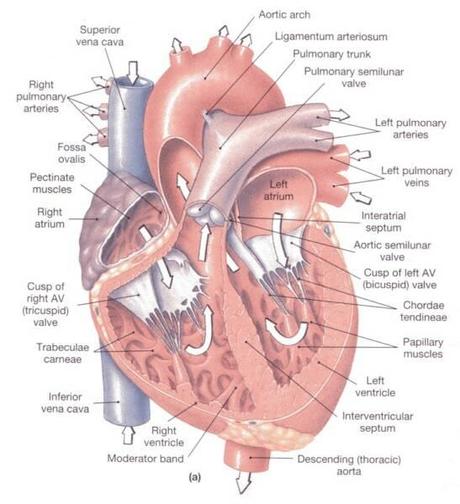
All forms of congenital heart disease occur in dogs. The most common defects are valve malformations (called dysplasias), valve narrowing (stenosis), and abnormal openings between the heart chambers (septal defects), patent ductus arteriosus, and Tetralogy of Fallot.
Patent ductus arteriosus is a persistent arterial connection between the aorta and pulmonary artery that normally closes at birth or shortly thereafter. In the uterus, the ductus plays an important role in shunting blood away from the nonfunctioning lungs. Many large and small breeds are affected by patent ductus arteriosus. This murmur can often be felt through the body wall – it feels like a washing machine churning. Tetralogy of Fallot is a congenital defect of the heart consisting of four abnormalities that result in insufficiently oxygenated blood pumped to the body. Most dogs with severe congenital heart defects die within the first year of life.
Check out Guide Questions for Dog Adoption
Dogs with moderate defects may survive but usually exhibit exercise intolerance, fainting episodes, and stunted growth. In these individuals, heart failure can occur suddenly and unexpectedly. Dogs with mild valvular disease or small septal defects are often asymptomatic; the only indication of a congenital heart defect is a heart murmur discovered on physical examination.
The diagnosis of congenital heart defect is based on ECG, chest X-rays and echocardiogram. An ultrasound study called Doppler echocardiography measures the velocity and direction of blood flow in the heart chambers. This information makes the diagnosis of congenital heart defects extremely accurate. You may need to be referred to a specialty clinic for this test. Cardiac catheterization with angiocardiography was once the “gold standard” for diagnosing congenital heart defects, but it carries a small risk and is often available only at referral veterinary hospitals. Doppler echocardiography, being accurate and noninvasive, has largely replaced cardiac catheterization for routine diagnosis.

The Dog’s Heart *
Dogs with minor heart defects have a good prognosis and do not benefit from surgery. However, many dogs benefit from surgery to correct more severe defects. Many of these surgeries will require referral to a large veterinary center. Patent ductus arteriosus is an example of a defect that does benefit from surgery. Without surgery, 60% of affected puppies die within the first year. With surgery, the death rate is less than 10%.
Moderate atrial and ventricular septal defects can be repaired surgically with varying degrees of success. This requires open-heart surgery and cardiopulmonary bypass. Valve dysplasias and large septal defects have a poor prognosis, regardless of the method of treatment. Affected dogs are at risk of congestive heart failure and sudden death. The treatment of congestive heart failure and cardiac arrhythmias is discussed later in this chapter.
Most congenital heart defects have a hereditary basis. Breeds with a known predisposition for specific congenital heart defects are shown in the accompanying chart. This list is by no means comprehensive, and individuals of other breeds and mixed breeds may also show these defects.
Arrhythmia
Arrhythmias are irregular or erratic heartbeats. Normally the heart beats at a steady, regular pace. This changes with activity or rest, but is almost always a regular rhythm. Abnormal rhythms may be slower than normal (called bradycardia) or faster than normal (called tachycardia). Sometimes the speed or rate may be normal but the heartbeats follow an abnormal path through the heart muscle.
Many things may cause irregular heart rates and rhythms, including increased potassium, hormonal influences, certain cancers such as hemangiosarcoma, and heart diseases such as cardiomyopathy. Affected dogs may show anxiety, weakness, lethargy or even faint. To diagnose these problems, your dog will need an EKG (electrocardiogram, sometimes also called ECG) and possibly a cardiac ultrasound evaluation. Your veterinarian may decide to have your dog wear a special heart monitor for 24 hours if the abnormality is infrequent. Treatment: This may include various drugs to regulate the heart rate or rhythm. Some dogs benefit from having a pacemaker implanted.
* image source

